Abstract
Responding of 6 adult male baboons (Papio c. anubis) was maintained under a fixed-ratio schedule of food reinforcement during daily 22-hr experimental sessions. Completion of the ratio requirement resulted in the delivery of a single 1-g food pellet; supplemental feeding was limited to a daily fruit ration. Ratio values were increased on Mondays, Wednesdays, and Fridays according to the following schedule: 2, 4, 8, 16, 32, 64, 96, 128. Responding under each ratio value was examined four times. Under the Fixed-Ratio 2 conditions, food intake ranged between 300 and 600 g. Ratios were increased for each baboon until food intake decreased to about 100 g (20% to 30% of Fixed-Ratio 2 intake). Increasing the response cost increased total time responding and total daily responding in all baboons, but this increase in responding was not sufficient to maintain stable food intake. Baboons responded between 90 and 180 min per day. The highest running response rates were observed under the Fixed-Ratio 2 and Fixed-Ratio 4 schedules. Running rate was similar across the larger ratio values (greater than Fixed-Ratio 8) but was lower than that observed under the Fixed-Ratio 2 and Fixed-Ratio 4 schedules. Similar results were observed the four times that each fixed-ratio value was tested. Intake as a function of cost was analyzed by fitting data to the nonlinear equation proposed by Hursh, Raslear, Shurtleff, Bauman, and Simmons (1988) for "demand" functions. Demand for food was inelastic over most of the ratio values until food intake decreased to 15% to 55% of baseline. The results indicate that demand functions are appropriate for the study of food intake in baboons, but also caution that intake at the cost when demand shifts from inelastic to elastic and its relationship to maximal intake should also be included in analyses of demand for a commodity.
Full text
PDF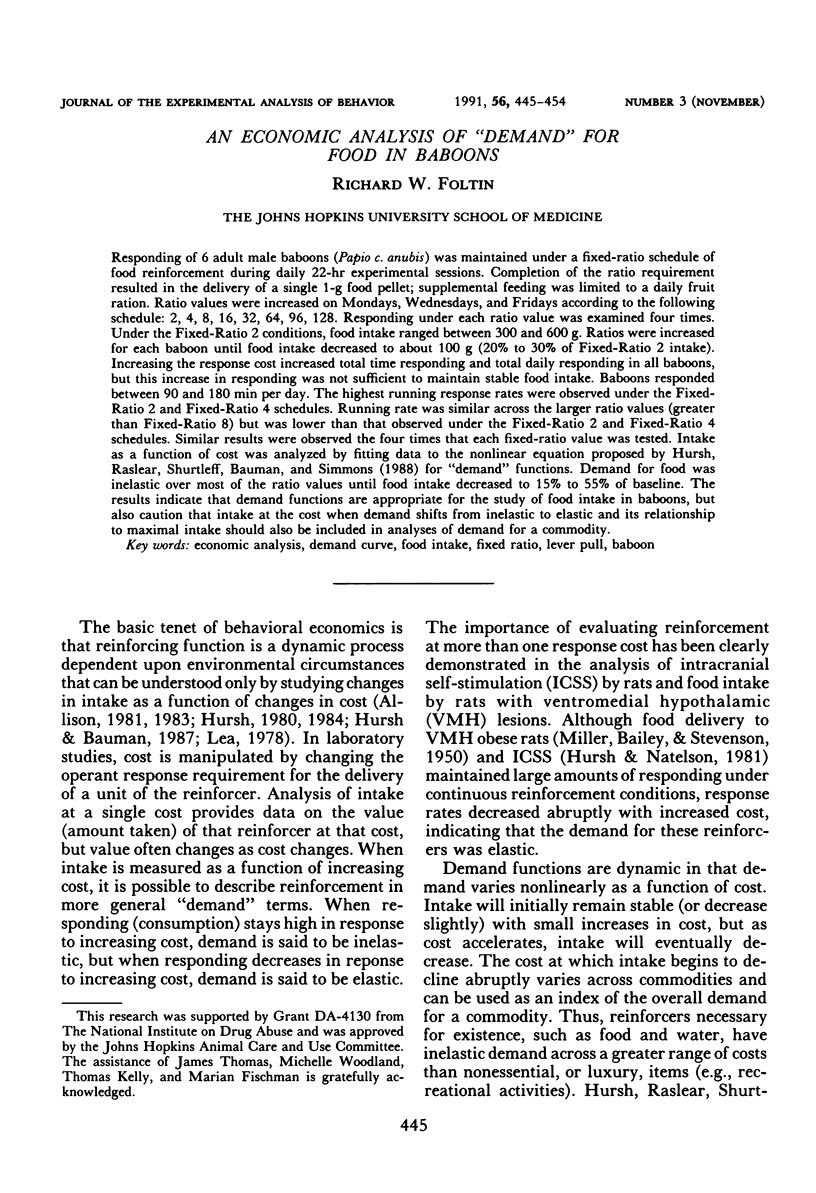
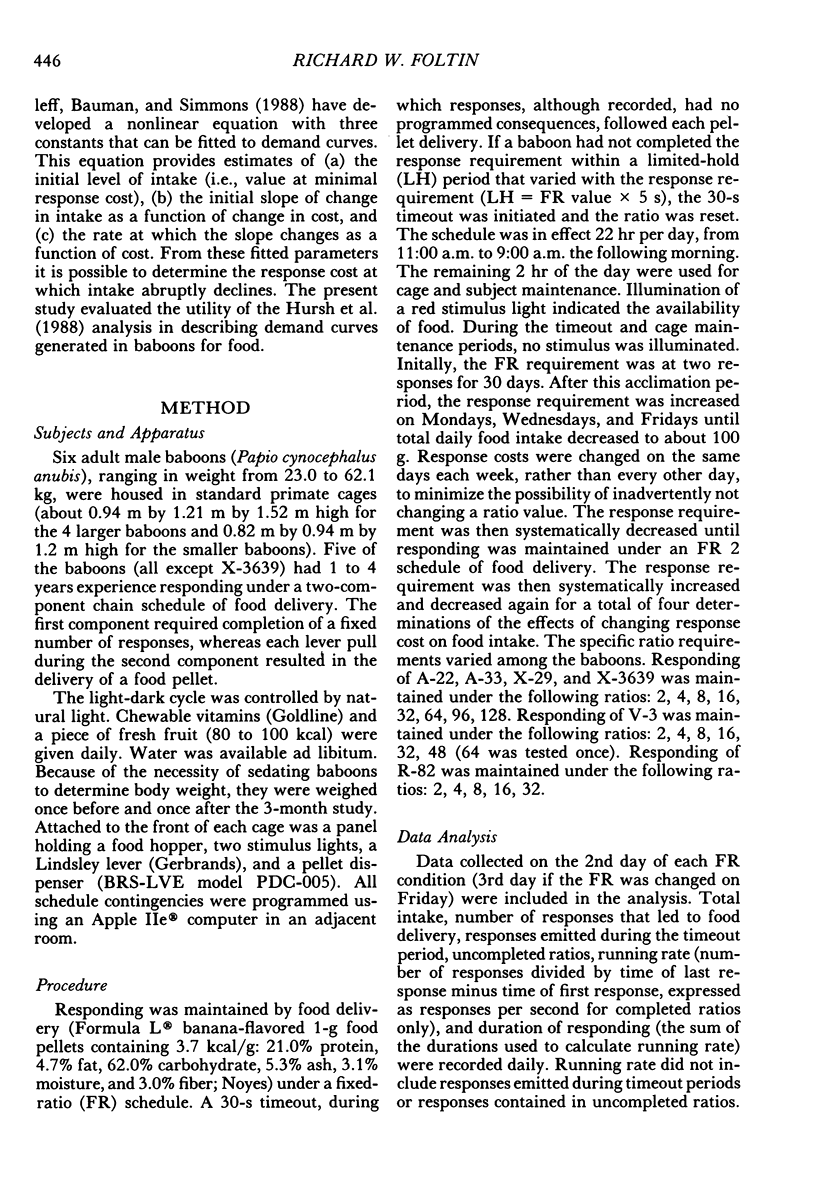
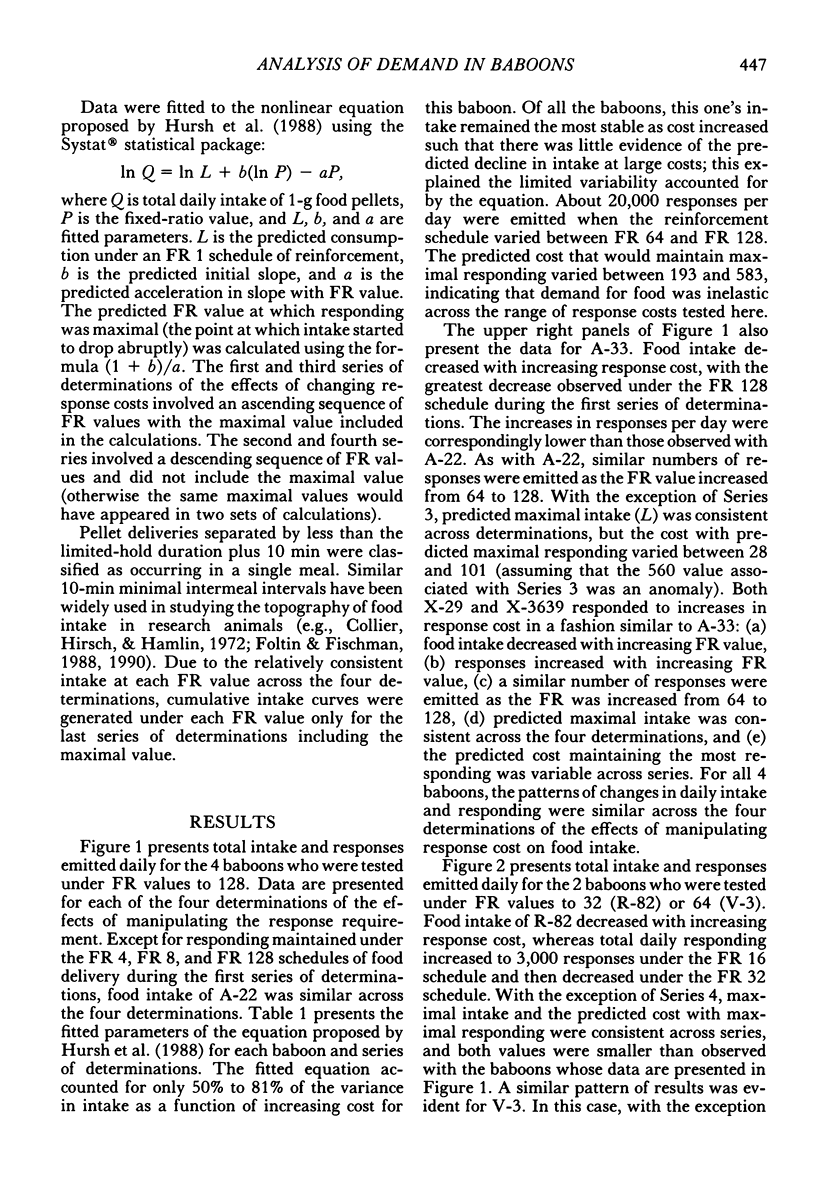

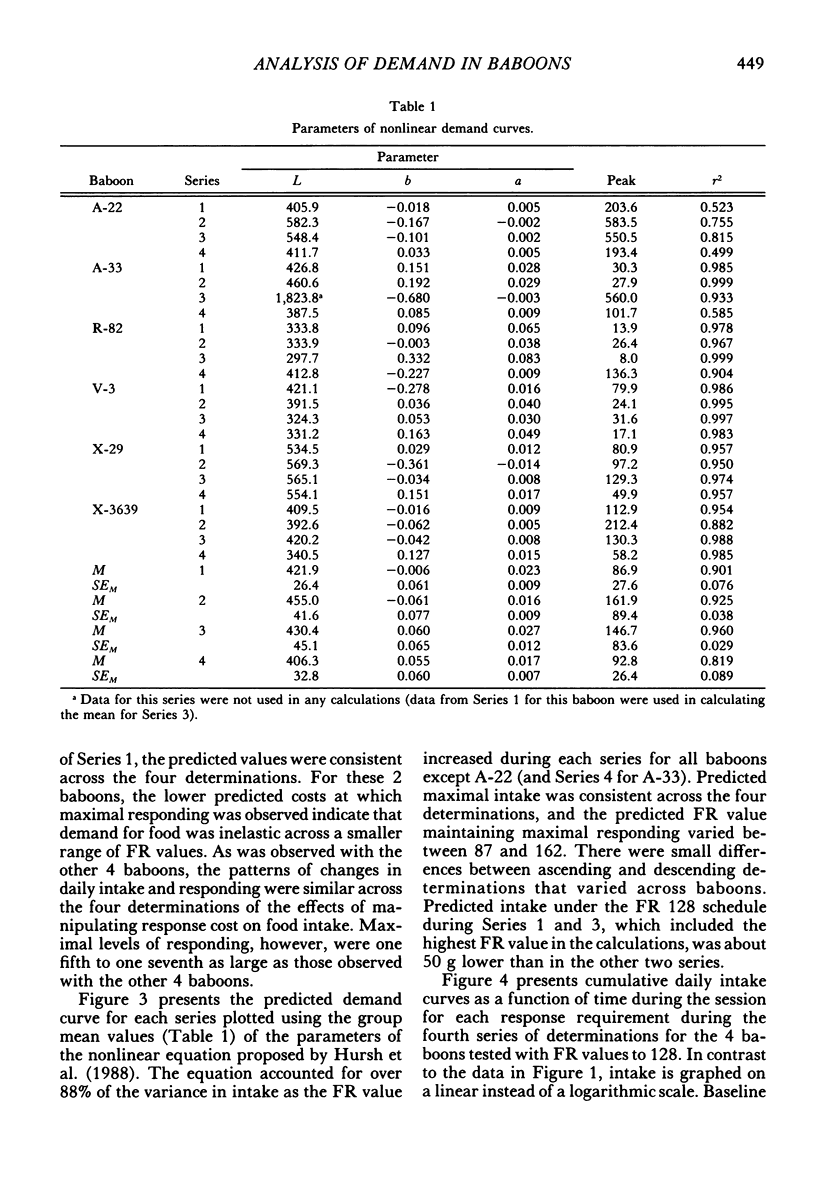
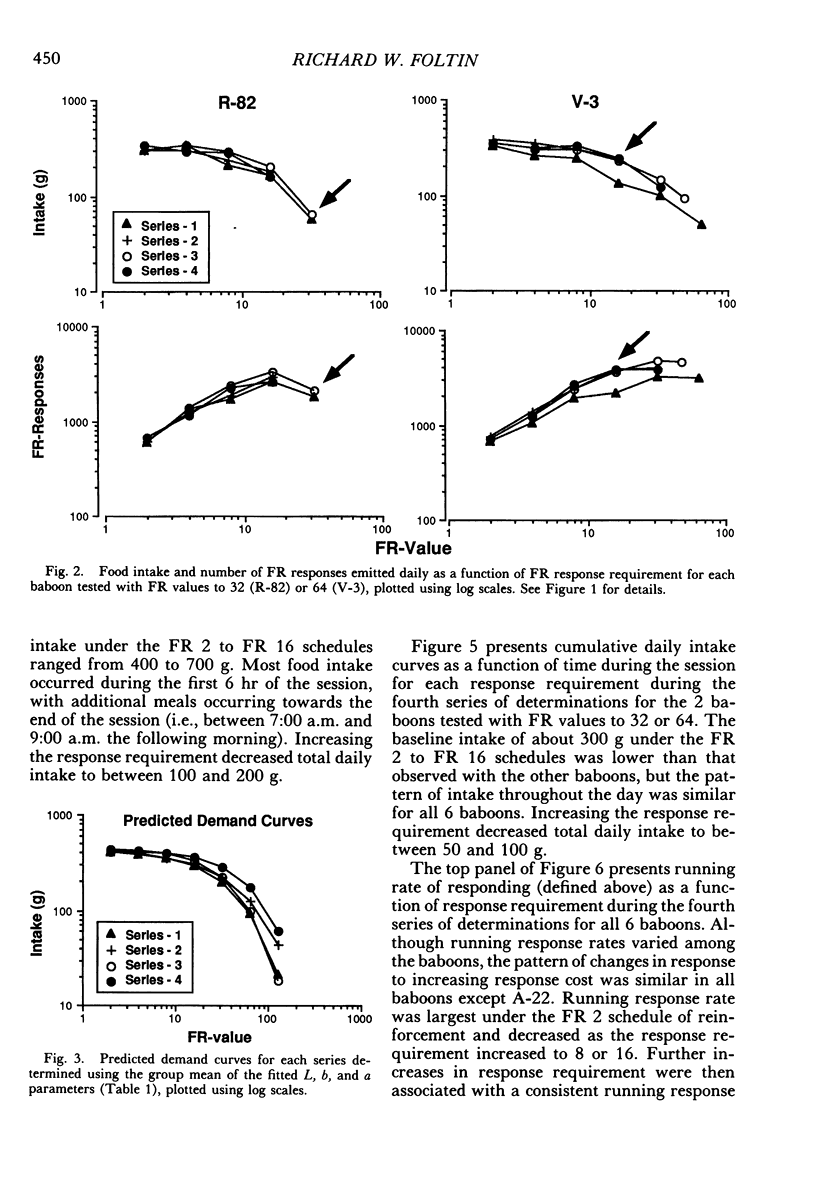
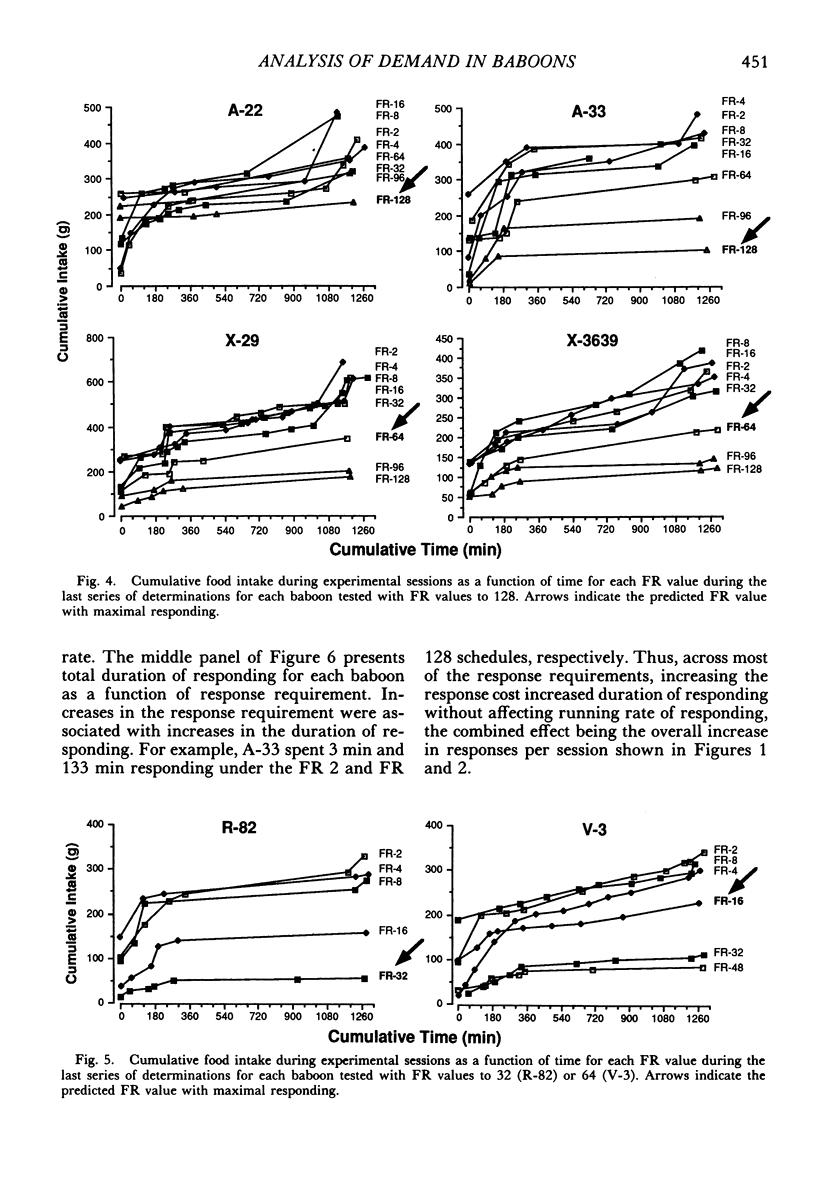
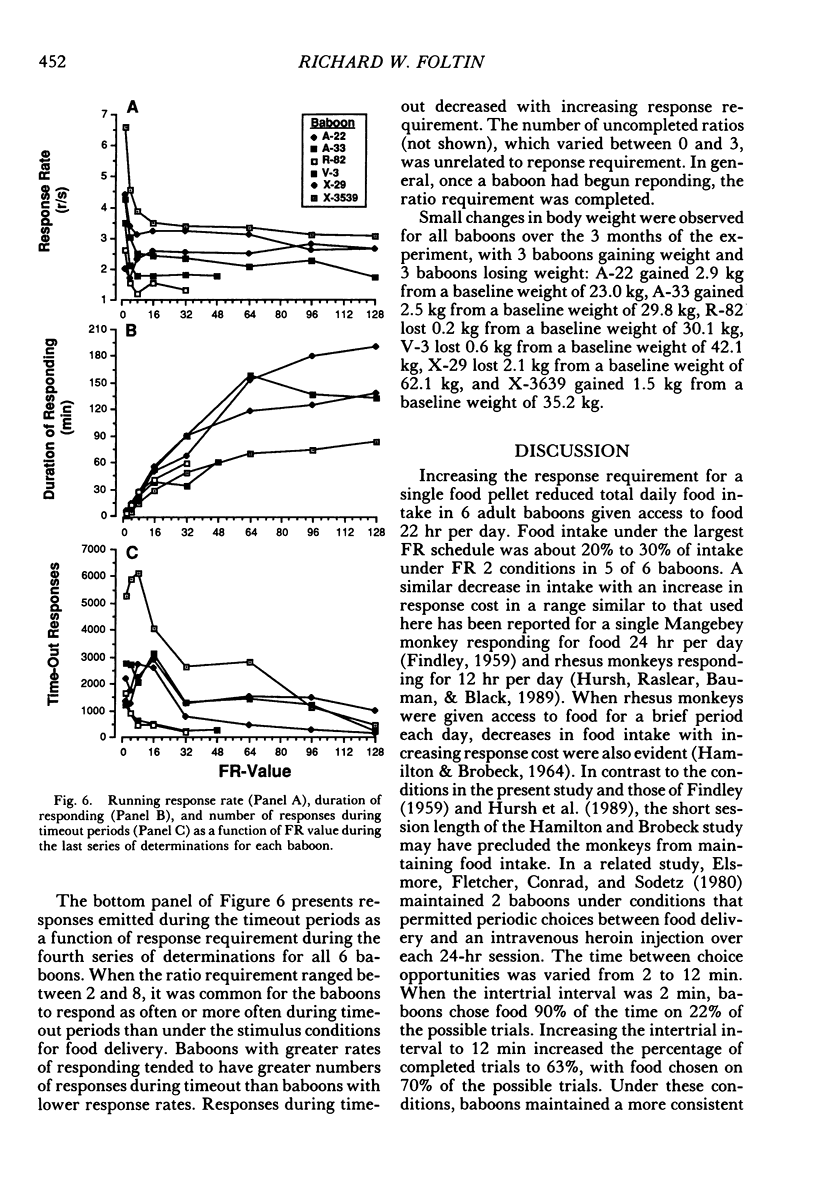
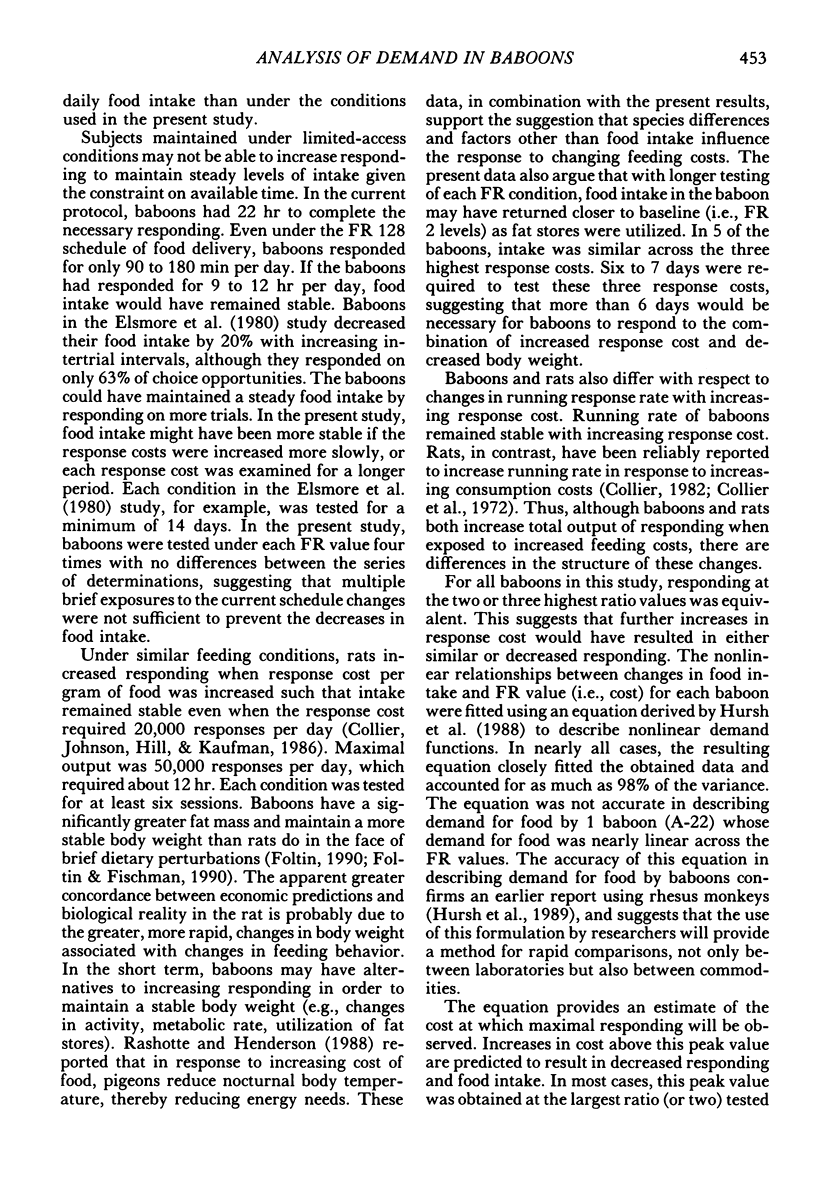
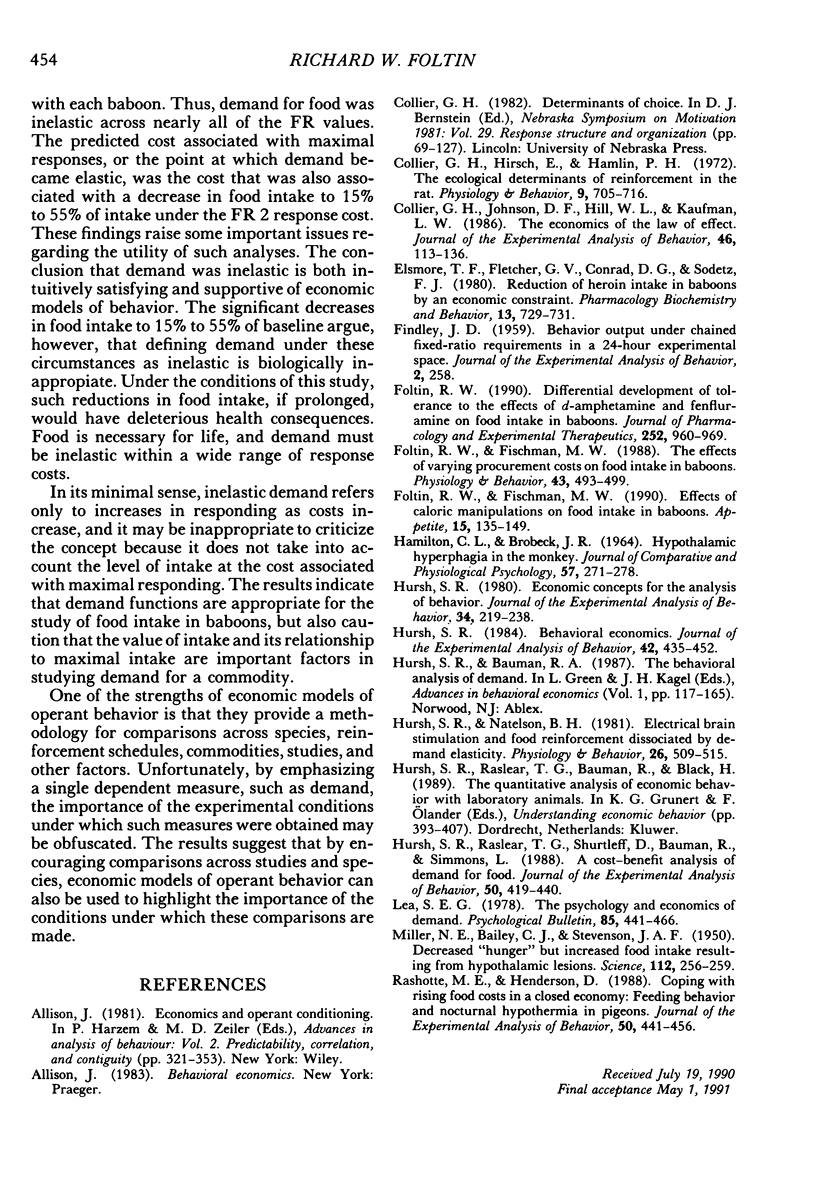
Selected References
These references are in PubMed. This may not be the complete list of references from this article.
- Collier G. H., Johnson D. F., Hill W. L., Kaufman L. W. The economics of the law of effect. J Exp Anal Behav. 1986 Sep;46(2):113–136. doi: 10.1901/jeab.1986.46-113. [DOI] [PMC free article] [PubMed] [Google Scholar]
- Collier G., Hirsch E., Hamlin P. H. The ecological determinants of reinforcement in the rat. Physiol Behav. 1972 Nov-Dec;9(5):705–716. doi: 10.1016/0031-9384(72)90038-8. [DOI] [PubMed] [Google Scholar]
- Elsmore T. F., Fletcher G. V., Conrad D. G., Sodetz F. J. Reduction of heroin intake in baboons by an economic constraint. Pharmacol Biochem Behav. 1980 Nov;13(5):729–731. doi: 10.1016/0091-3057(80)90018-0. [DOI] [PubMed] [Google Scholar]
- Foltin R. W. Differential development of tolerance to the effects of d-amphetamine and fenfluramine on food intake in baboons. J Pharmacol Exp Ther. 1990 Mar;252(3):960–969. [PubMed] [Google Scholar]
- Foltin R. W., Fischman M. W. Effects of caloric manipulations on food intake in baboons. Appetite. 1990 Oct;15(2):135–149. doi: 10.1016/0195-6663(90)90046-b. [DOI] [PubMed] [Google Scholar]
- Foltin R. W., Fischman M. W. The effects of varying procurement costs on food intake in baboons. Physiol Behav. 1988;43(4):493–499. doi: 10.1016/0031-9384(88)90124-2. [DOI] [PubMed] [Google Scholar]
- HAMILTON C. L., BROBECK J. R. HYPOTHALAMIC HYPERPHAGIA IN THE MONKEY. J Comp Physiol Psychol. 1964 Apr;57:271–278. doi: 10.1037/h0039915. [DOI] [PubMed] [Google Scholar]
- Hursh S. R. Behavioral economics. J Exp Anal Behav. 1984 Nov;42(3):435–452. doi: 10.1901/jeab.1984.42-435. [DOI] [PMC free article] [PubMed] [Google Scholar]
- Hursh S. R. Economic concepts for the analysis of behavior. J Exp Anal Behav. 1980 Sep;34(2):219–238. doi: 10.1901/jeab.1980.34-219. [DOI] [PMC free article] [PubMed] [Google Scholar]
- Hursh S. R., Natelson B. H. Electrical brain stimulation and food reinforcement dissociated by demand elasticity. Physiol Behav. 1981 Mar;26(3):509–515. doi: 10.1016/0031-9384(81)90180-3. [DOI] [PubMed] [Google Scholar]
- Hursh S. R., Raslear T. G., Shurtleff D., Bauman R., Simmons L. A cost-benefit analysis of demand for food. J Exp Anal Behav. 1988 Nov;50(3):419–440. doi: 10.1901/jeab.1988.50-419. [DOI] [PMC free article] [PubMed] [Google Scholar]
- MILLER N. E., BAILEY C. J., STEVENSON J. A. F. Decreased "hunger" but increased food intake resulting from hypothalamic lesions. Science. 1950 Sep 1;112(2905):256–259. doi: 10.1126/science.112.2905.256. [DOI] [PubMed] [Google Scholar]
- Rashotte M. E., Henderson D. Coping with rising food costs in a closed economy: feeding behavior and nocturnal hypothermia in pigeons. J Exp Anal Behav. 1988 Nov;50(3):441–456. doi: 10.1901/jeab.1988.50-441. [DOI] [PMC free article] [PubMed] [Google Scholar]


